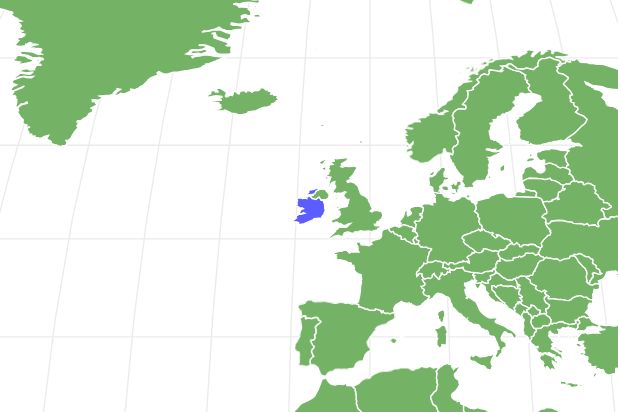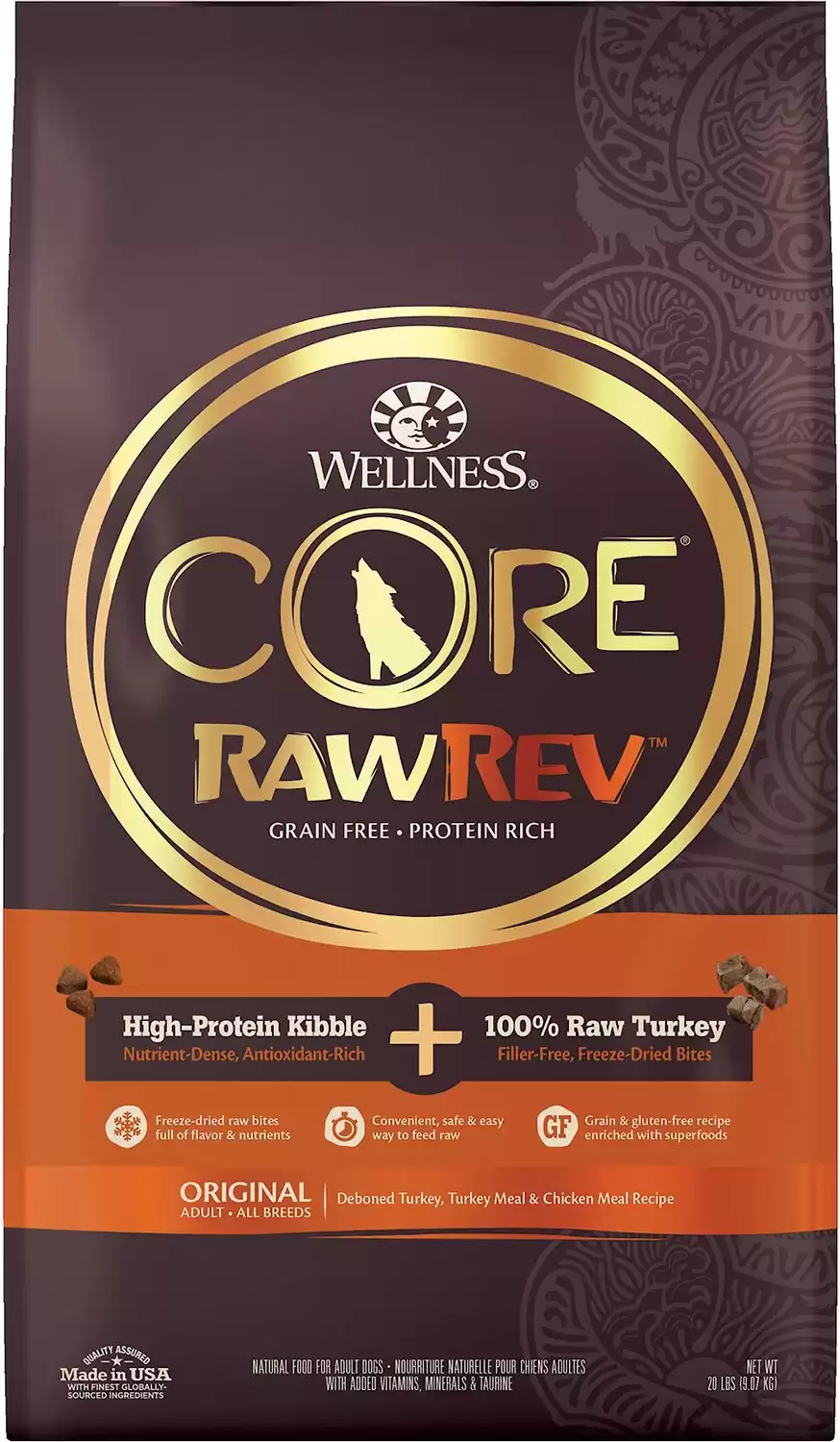Irish Terrier
Canis lupus
An average 300 Irish Terrier puppies are born each year in the United States.
Advertisement
Irish Terrier Scientific Classification
- Kingdom
- Animalia
- Phylum
- Chordata
- Class
- Mammalia
- Order
- Carnivora
- Family
- Canidae
- Genus
- Canis
- Scientific Name
- Canis lupus
Read our Complete Guide to Classification of Animals.
Irish Terrier Conservation Status
Irish Terrier Facts
- Fun Fact
- An average 300 Irish Terrier puppies are born each year in the United States.
- Temperament
- Intelligent, lively, dominant
- Diet
- Omnivore
Irish Terrier as a Pet:
- General Health
- Energy Level
- Shedability
- Trainability
- Intelligence
- Tendency to Chew
- Size
- Family and kid friendliness
- Yappiness / Barking
- Moderate
- Hypoallergenic
- Yes
- Separation Anxiety
- Moderate
- Preferred Temperature
- Average climate
- Exercise Needs
- High
- Friendly With Other Dogs
- Moderate
- Pure bred cost to own
- $600–$2,500
- Dog group
- Terrier
- Male weight
- 22-27 lbs
- Female weight
- 20-25 lbs
This post may contain affiliate links to our partners like Chewy, Amazon, and others. Purchasing through these helps us further the A-Z Animals mission to educate about the world's species.
View all of the Irish Terrier images!
One of the nicknames of the Irish terrier is “d’Artagnan.” It refers to his winning ways and cool confidence. Another nickname is “Daredevil,” a nod to the pooch’s knack for running into danger.
Stouthearted and rugged, the Irish terrier is one of the original terrier breeds. With her fiery, typically red wiry coat, the dog’s a mid-sized creature that’s suited to her roots in Ireland. The coat can also be dark or black.
See all of our expert product reviews.
She has the great ability to be graceful, agile, and fast. She definitely has more energy than you. And this dog is mischievous! She’ll dig up the garden or claw through your shoes.
The dog’s noted for being stubborn and intelligent. She wants to play, run and chase. The Ireland dog’s going to go after squirrels and rodents. While they take cues from their owner, in general, the Irish terrier is suspicious of strangers.
With early socialization, she’s great with kids. Expect your Irish terrier to enjoy life.

3 Pros and Cons of Owning an Irish Terrier
You’re going to love your Irish terrier, but trust she’s going to be a handful. Here are three great things and three not-so-great things to take into account about having this dog in your home.
| Pros! | Cons! |
|---|---|
| Doesn’t shed too much Shed hairs get trapped in the dog’s wiry coat until you brush them out. That makes the Irish terrier as close to hypoallergenic as it gets. You minimize pet dander in your spaces. This is a good pet for homes with people who suffer from respiratory problems. | The infamous terrier temperament When it comes to temperament, this doggy tends to be similar. Quick to chase, persistent, quick to bark, feisty, lively, bossy, clever, independent, scrappy, stubborn, intense, impulsive. |
| Makes for a great family pet and watchdog Despite a strong streak of independence, this is a dog that loves being around family. A vocal pet, it’s guaranteed you get a nice round of doggy alerts to any odd activity in your family’s perimeter. | Can be hard to find The waiting lists for the Irish terrier are lengthy. Breeders can’t keep up with the demand. This trend tends to lean toward high price tags. Puppies are going to cost you a pretty penny. You may need to consider an adult dog from a shelter or rescue. |
| Dog’s Comfortable With Being Alone These puppies are not prone to separation anxiety. So, unlike a lot of dogs, you won’t have to worry about them while you’re gone for the day. But you want them trained well before you start leaving the Irish terrier alone. Otherwise, expect your dog to get into trouble. | Mischievous This terrier’s known for digging in gardens, clawing through closets, and just being plain busy. Stubbornness can make training difficult. It’s why early socialization and training of Irish terrier puppies is importan |
History of the Breed
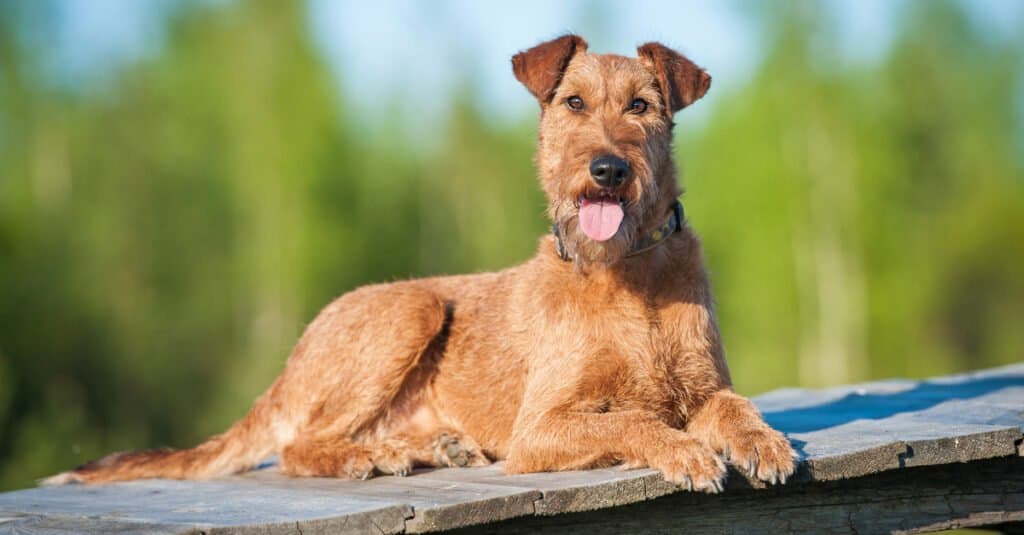
It wasn’t until the late 19th century that this dog became known for its solid red color.
Health and Entertainment for your Irish Terrier
See all of our expert product reviews.
©Rita_Kochmarjova/Shutterstock.com
Irish terriers have been found throughout Ireland for centuries and are one of the older terrier breeds. While their exact date of inception is not known, it is believed they began in the late 19th century in Cork, Ireland, although there are images that appear to depict this breed dating back to the 18th century. It has been nicknamed the daredevil for its reputation of being courageous in the face of danger as well as loyal and spirited and even served as a messenger and sentinel dog in World War I.
It is thought that they were bred from the now-extinct black and tan terrier and early variations of the breed came in a wider variety of colors. It wasn’t until the late 19th century that this dog became known for its solid red color.
Size and Weight
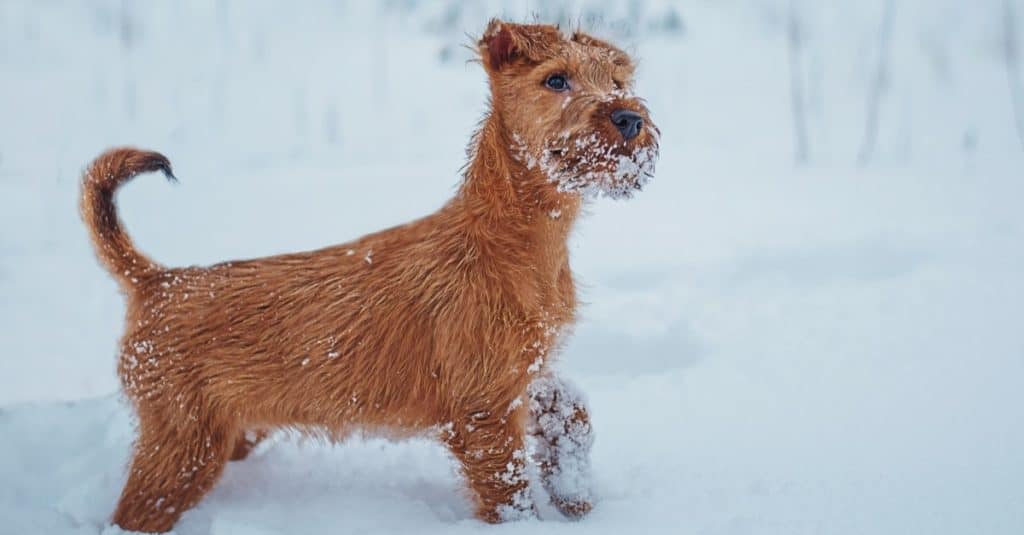
Fully grown male and female Irish terriers will max out at 18 inches tall.
©Lebedeva Olga/Shutterstock.com
Most breeders will tell you all the rumors about Ireland’s most popular dog’s large size are an exaggeration. They are big dogs, but only when compared to other terriers. In the world of dogs in general, the Irish terrier is only medium-sized.
Fully grown male and female Irish terriers will max out at 18 inches tall. In terms of weight, the male tends to be slightly heavier than the female. Males can weigh around 27 pounds. The female Irish terrier will top out at 25 pounds.
| Height (Male) | 18″ tall |
| Height (Female) | 18″ tall |
| Weight (Male) | 27 pounds |
| Weight (Female) | 25 pounds |
Common Health Issues
There’s the possibility of any dog inheriting genetic health problems. Be wary of breeders who cannot offer a healthy prospect for their puppies. Reputable breeders will be open and honest about any issues you can expect from a breed.
In general, your Irish terrier is healthy but not completely safe from genetics. Here are the more common issues you might encounter.
- Muscular dystrophy
- Cataracts
- Progressive retinal atrophy
- Hyperkeratosis
- Obesity
Temperament
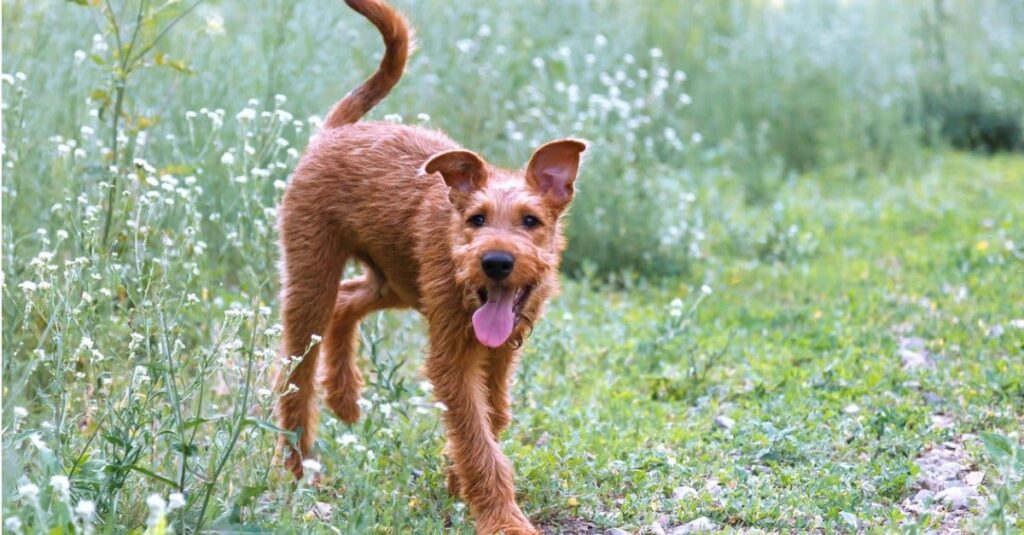
The Irish Terrier is known for his pluckiness, devotion, and curiosity.
©iStock.com/Svetlana Evgrafova
The Irish terrier was bred to be a guard dog, companion, and hunter. Among his better qualities are being spirited, good-tempered, adaptable, and alert. He’s also known for his pluckiness, devotion, and curiosity. Of course, with the good comes the bad. The dog can be reckless, stubborn, strong-willed, and scrappy with other animals.
Your dog is extremely intelligent and will need mental challenges. Engage him through play and training, physical exercise, and firm, loving discipline. These dogs love people and will follow their cues when it comes to strangers or strange situations.
Training, heredity, and socialization influence the animal’s temperament. Early exposure to sights, experiences, sounds, and different people is the best way to develop a well-rounded dog.
Puppies can be playful and curious, willing to interact with people. Your best bet is middle-of-the-road puppies. When talking with breeders, shops, or rescue staff, ask about a dog’s aggressiveness and how he behaves with other animals.
How To Take Care of Irish Terrier
Once trained, this dark, black, or red dog doesn’t need a lot of attention. (This doesn’t mean poochy won’t want the attention, so don’t overlook her.) She’s a healthy and strong animal, both mind- and body-wise. The Irish terrier needs playtime and exercise. Someone will have to groom her regularly.
The Best Dog Food for Irish Terriers
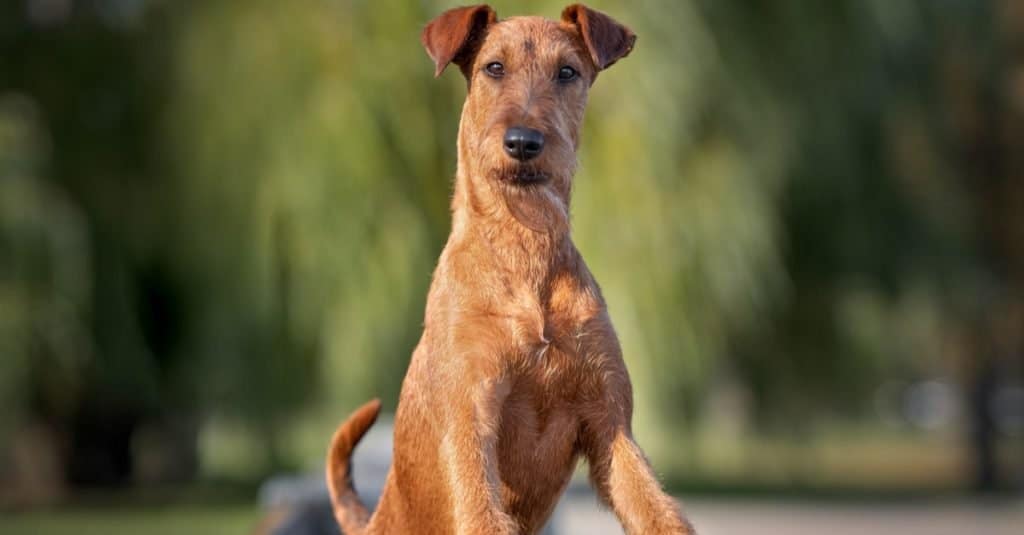
A highly active dog like your Irish terrier will require more energy than an older, couch potato pet.
©otsphoto/Shutterstock.com
The recommended feed for the Ireland terrier is one to 1.5 cups of quality dry dog food. You should divide this into two meals over the day.
What and how much your dog eats is dependent on age, size, build, activity level, and metabolism. Not all dogs need the same amount of food. A highly active dog like your Irish terrier will require more energy than an older, couch potato pet.
Avoid overfeeding. If you need to check her weight, place your hands on her back. Keep the thumbs along the spine and spread your fingers downward. If you can’t feel her ribs without pressing down, you may want to reconsider how you’re feeding her and get a little more exercise in.
Many owners have success giving their dogs a freeze-dried raw diet for less processed, higher protein, and more satisfying nutrition.
Therefore, A-Z Animals says the best dog food for Irish Terriers is Wellness CORE RawRev Wholesome Grains Small Breed Original Recipe.
Firstly, the high-protein recipe full of turkey and chicken helps build muscle and also incorporates grains for fiber and a more satiating meal to prevent overeating. Second, the taurine and carrots mean a one-two punch to give your dog’s eyes a fighting chance at lifelong clarity and sharpness.
Check Chewy or Amazon for this product.
- High protein nutrient dense 100% raw turkey blend
- Promotes healthy skin and coat
- Glucosamine, antioxidants, and omega fatty acids for immune health
Maintenance and Grooming
The short dark, red or black coat of the hypoallergenic Irish terrier needs stripping, brushing and trimming regularly, perhaps twice a week. This will remove loose hair and dirt. He has a dense, wiry coat that hugs him, creating a tight jacket. There’s a softer coat beneath that keeps him warm on unpleasant days. Trim his nails too. Long nails can make the dog uncomfortable.
Brush the teeth several times a week to remove tartar and bacteria. Also, the terrier has a unique set of ears. The puppies may need “training” to achieve the V-shaped fold of the ears that give these dogs that Irish rogue demeanor. That entails gluing and taping the ears down until they fall right. This best takes place between four to eight months of age. Have a consult with your breeders to learn how to do it.
Training
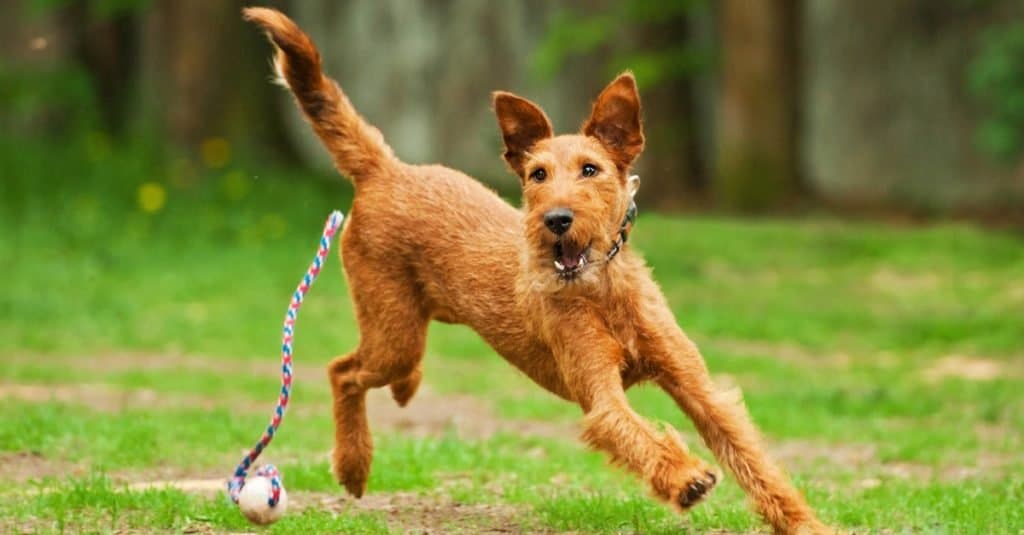
The Irish terrier picks up on commands and tricks easily as she’s very clever.
©Rita_Kochmarjova/Shutterstock.com
Your Irish terrier is a tough nut to crack. Independent and strong-willed, she’ll dismiss training as if there are other things to do. This is why training needs to start early, hopefully when they’re puppies.
The Irish terrier picks up on commands and tricks easily as she’s very clever. Positive reinforcement helps. But avoid long training sessions. She’ll get bored and simply stop paying attention.
Exercise
Healthy Irish terriers need at least an hour a day of physical activity. He can run with you or have a great time at all varieties of dog sports. Doggy can run for hours and manage half-day hikes with no stress.
These are not necessarily apartment dogs. He’d be comfortable with an enclosed yard for burning off steam. The dog’s flush with energy, but once burned off, he can relax on the couch.
Puppies
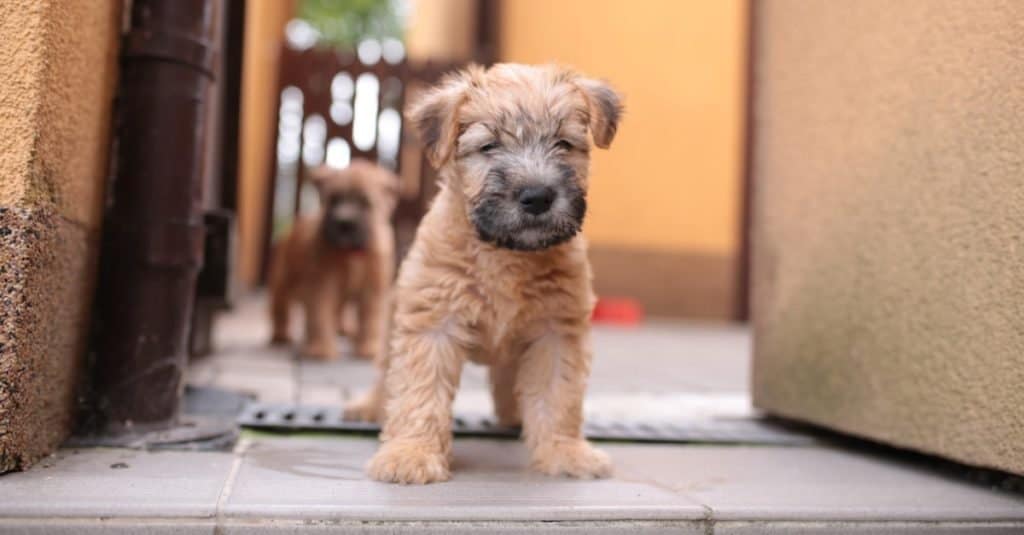
These terriers are prone to expensive eye conditions so breeders should have a certificate from the Canine Eye Registry Foundation that’s no more than a year old.
©SubertT/Shutterstock.com
They are hard to find but locating an Irish terrier isn’t an impossible mission. You might find these puppies at (i) a public animal shelter ready for adoption, (ii) a dog rescue operation, or (iii) a reputable breeder. Once you find a dog, look for online reviews to find out if the breeders have a rep for healthy puppies.
As these terriers are prone to expensive eye conditions, breeders should have a certificate from the Canine Eye Registry Foundation that’s no more than a year old.
Irish Terrier And Children
A legend says leprechauns give Irish terriers to children. The dog’s energy level and size do make them great companions for kids. But if children are young, supervise all interactions.
Training should include puppies not being mouthy and rough. Teach children to not hit the dog, or pull on the ears or tail. Children must never approach a dog while he’s sleeping. They need to know to never disturb an eating dog or try to take the dog’s food away.
Dogs Similar to Irish Terriers
As stated, the Irish terrier is going to be a tough find. Here are three similar dogs you can consider making a family member.
- Welsh Terrier – The Welsh terrier has the same spirit and alertness as any member of the terrier family. Breeders say what distinguishes the Welshman is the dog’s a little calmer and game but not necessarily as stubborn.
- Airedale Terrier – This one’s referred to as “The King of Terriers.” It does have a regale stance and has earned the titles of athlete, hunter, and trusted companion.
- Lakeland Terrier – These are big dogs in small bodies. The Lakeland terrier is famous for being confident, bold, and friendly. She’s named for her native England’s Lake District. A farmer’s work dog, she was bred to work in packs against sheep-attacking foxes.
Popular Names for Irish Terriers
Here are some of the more popular names for Irish terriers, male and female.
Male
- Anrai
- Connor
- Chase
- Dagda
- Dingle
Female
- Aine
- Bailey
- Brigid
- Casey
- Cassidy
Irish Terrier FAQs (Frequently Asked Questions)
What is an Irish terrier?
A purebred, the Irish terrier originated on the Emerald Isle as a worker dog. They’re called the farmer’s friend, the poor man’s sentinel, and the gentleman’s favorite. The dog’s rugged, stout, loyal, and makes an excellent companion.
How much do Irish terrier puppies cost?
If you’re looking enough to find one, these puppies can range between $600 and $1,000. Depending on the location, adults may cost less. Lifetime expenses can vary, but on average, you’ll spend $145 annual on food, $535 a year for things like grooming, training, and miscellaneous.
Are Irish terriers aggressive?
They can be if left untrained. Even then, the dog may be unfriendly with other animals and suspicious of strangers.
Can Irish terriers be left alone?
They’re independent but also mischievous. They will look for trouble. But you can train them to be comfortable with solitude.
Are Irish terriers smart?
These animals are extremely intelligent.
Is the Irish terrier good with kids?
The dog has to learn to curtail its aggressiveness and children need to know how to interact with the dog.
How long does the Irish terrier live?
The Irish terrier has a lifespan of 10 to 13 years.
What are the differences between the Irish Terrier and the Airedale Terrier?
Irish Terriers and Airedale Terriers differ in size, life expectancy, and common health issues, among others.
Thank you for reading! Have some feedback for us? Contact the AZ Animals editorial team.
Sources
- Your Pure Bred Puppy, Available here: https://www.yourpurebredpuppy.com/reviews/irishterriers.html
- Pet Finder, Available here: https://www.petfinder.com/dog-breeds/irish-terrier/
- Vet Street, Available here: http://www.vetstreet.com/dogs/irish-terrier#grooming
- Dog Breed List, Available here: https://www.dogbreedslist.info/all-dog-breeds/Irish-Terrier.html
- Dog-Learn, Available here: https://www.dog-learn.com/dog-breeds/irish-terrier/
- Spirit Dog, Available here: https://spiritdogtraining.com/breeds/irish-terrier/
- Dog Breed Plus, Available here: https://www.dogbreedplus.com/dog_breeds/irish_terrier.php
- Orvis, Available here: https://www.orvis.com/irish-terrier
- Dog Time, Available here: https://dogtime.com/dog-breeds/irish-terrier#/slide/2

